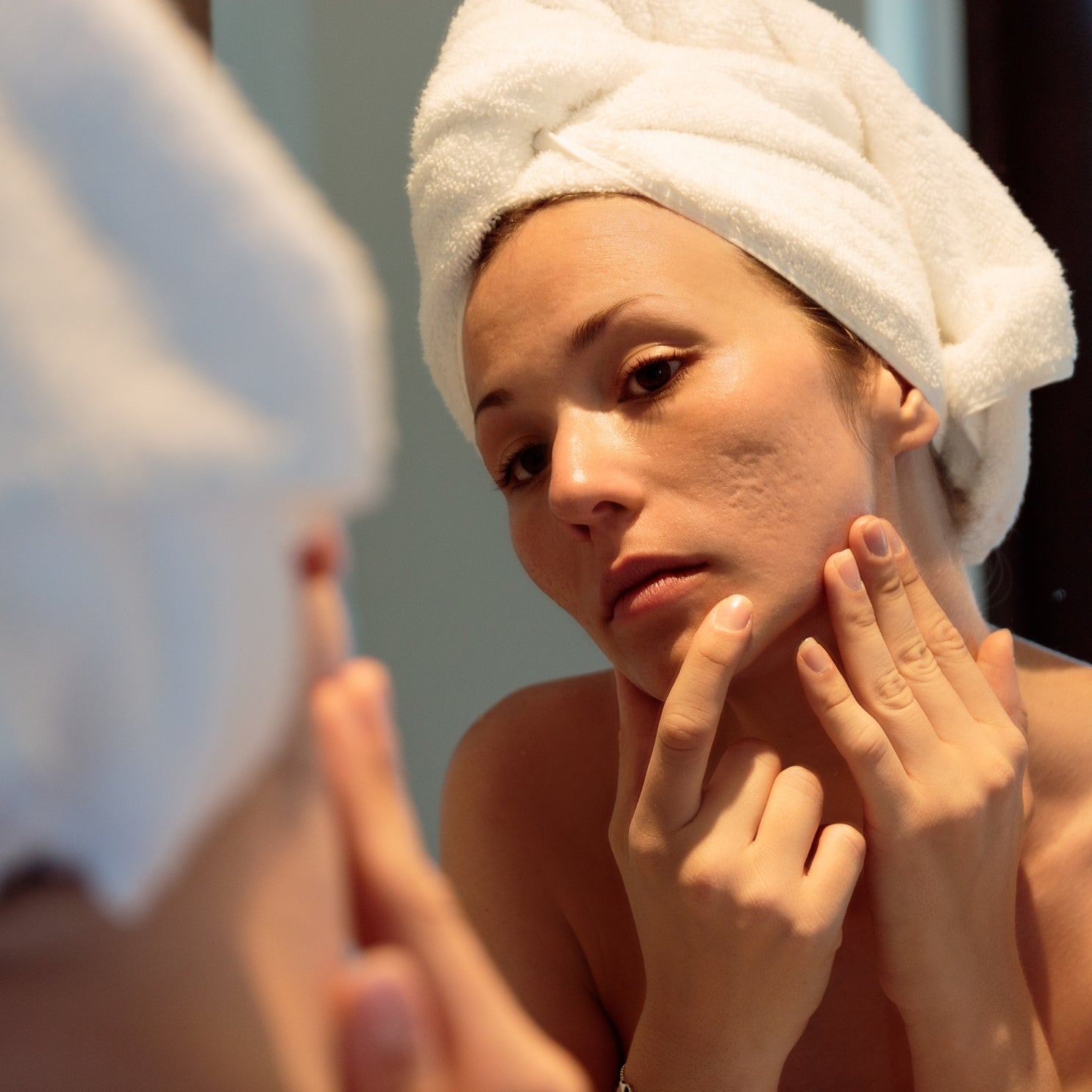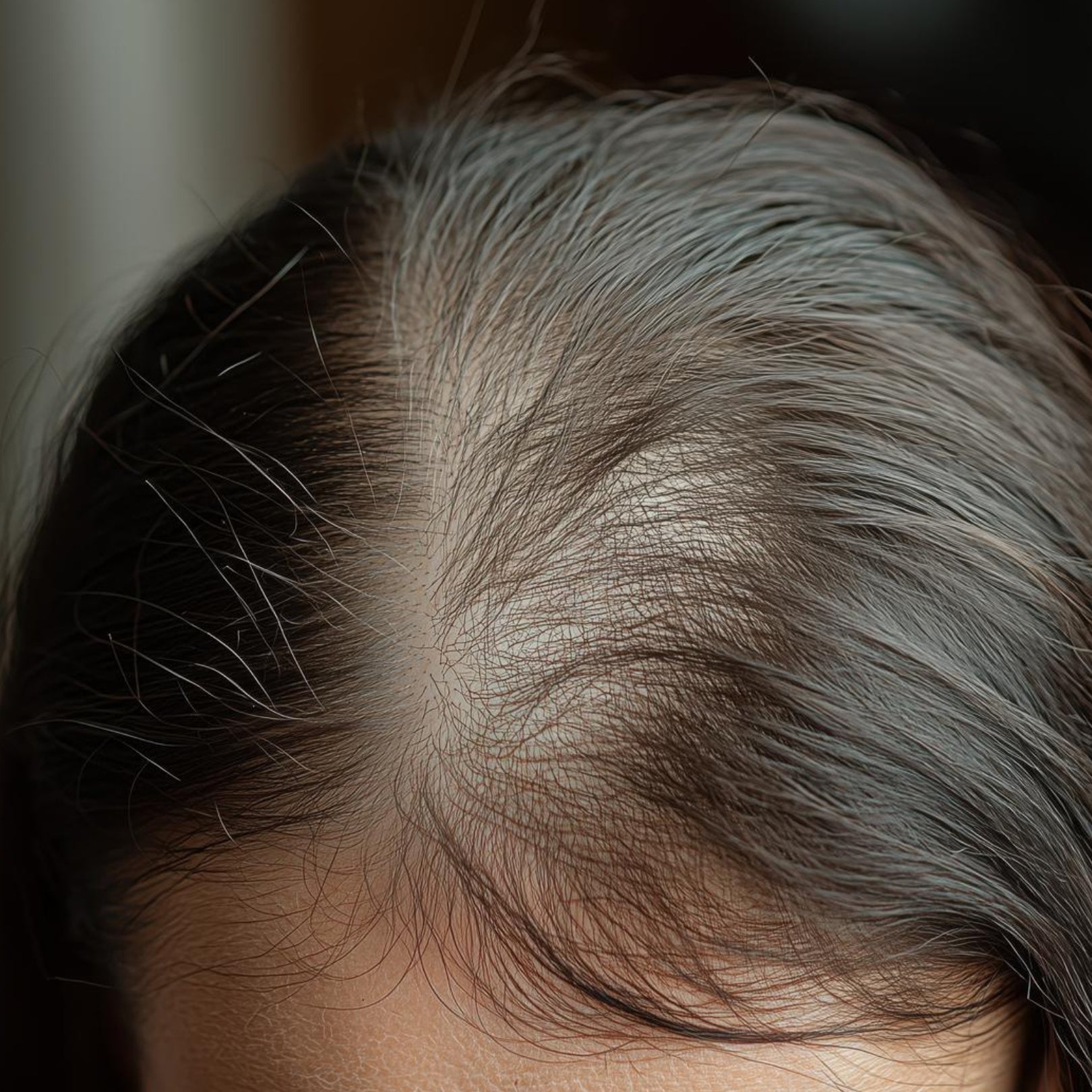Minoxidil side effects and how to fix them
Minoxidil has been the go-to hair loss treatment for men and women with androgenic alopecia since it was first FDA approved in the 1980s. However, not everyone can tolerate topical minoxidil.
We have teamed up with our pharmacist and formulator to answer all the commonly asked questions when it comes to using topical minoxidil, the side effects from topical minoxidil and how to fix them.
How do I know if minoxidil is what I need?
Hair shedding can be distressing and to know if you have androgenic alopecia, you can see a dermatologist for a thorough scalp assessment. Other signs and symptoms include one or more of the following:
- A widening of the middle part along the scalp in women.
- Excessive hair loss at the crown (the centre of the scalp is visible) with a widening of the middle part.
- You notice your hair is getting thinner and smaller in diameter over time. A simple test you can do at home is to gather all your hair strands together (the ones that have shed) and compare them side by side. Follicles affected by dihydrotestosterone (DHT) will miniaturise and produce hairs with a smaller diameter with each new cycle. As a result, there are noticeable variations in the thickness of each hair strand.
Why does my scalp itch after I apply minoxidil?
According to a study published by Shardi in 2023, approx. 23% of men and women will stop using topical minoxidil due to scalp itching or dermatitis like symptoms. Scalp itching is a common side effect with topical minoxidil for a few reasons:
1) The user has an allergy to propylene glycol, causing an intense itch.
2) Minoxidil is causing the itch (although this is more common with minoxidil 10%).
3) The alcohol is causing the skin to become dry and sensitive over time.
It is important to identify which ingredient is the allergen to determine if topical minoxidil still remains a suitable option for managing your hair loss.
Should I stop using minoxidil if my scalp is itchy?
Scalp itching occurs due to an allergy to one or more ingredients in the solution and can make one very self conscious. Minoxidil foam or minoxidil solutions without propylene glycol is recommended if you have scalp itching or flaking.
In our experience, users can expect to see an improvement in symptoms within three to four weeks of not being in contact with the allergen.
What happens when a woman uses 5% minoxidil?
Studies show both men and women experience greater results with 5% minoxidil compared to 2% minoxidil. Therefore, women will see better results with 5% minoxidil unless they have extremely low blood pressure.
Side effects such as headaches and dizziness are rare but can still occur.
Minoxidil is not recommended in pregnant women.
How do I know if minoxidil is working?
The best way to know if minoxidil is working is to stick with the treatment for at least 6 months (unless you are experiencing side effects).
In the first 3 months, you will go through a shedding phase. After the initial 3 months, hair shedding will slowly ease. After this period, vellus hair (baby hair) will start to grow. You may also see an overlap of shedding and new vellus hair.
The results from minoxidil does not peak for at least 12 months with continuous daily use.
What will happen once I stop using minoxidil?
When you stop using minoxidil, hair shedding will likely resume in as little as 30 days. Studies show hair loss can return to baseline as if the user has never used minoxidil if you stop using minoxidil for long enough. Many people feel discouraged by this fact, although the same principle applies to staying in shape and brushing your teeth.
How often should I wash my hair while using minoxidil?
Hair washing is recommended at least twice a week to keep the scalp clean. This will help the topical solution absorb better.
How do I know if I am applying minoxidil correctly?
It is recommended to concentrate on the areas that are balding or thinning and apply minoxidil to the scalp so that the solution can be absorbed into the hair follicles. Never apply minoxidil directly to the hair shaft where it is not likely to be absorbed.
Does tingling mean minoxidil is working?
Tingling is a sign of skin sensitivity. If the tingling sensation is severe, it is recommended that you stop using topical minoxidil and identify the causing allergen.
Tingling can also signal the strength of minoxidil you are using is too high. In our experience, tingling is more likely to be reported when using 7.5% minoxidil and 10% minoxidil.
Can I use topical minoxidil while breastfeeding for postpartum hair loss?
There is minimal information on the use of topical minoxidil during breastfeeding. The information we have suggests there is minimal absorption in the breast milk, however, the use of topical minoxidil should be avoided while breastfeeding a preterm or neonatal infants.
References:
- Drugs and Lactation. National Library of Medicine. Updated November 2024
- Olsen, E et al (2002). "A randomized clinical trial of 5% topical minoxidil versus 2% topical minoxidil and placebo in the treatment of androgenetic alopecia in men". J Am Acad Dermatology. 2002 Sep;47(3):377-85. doi: 10.1067/mjd.2002.124088.
- Lucky, A et al (2004). "A randomized, placebo-controlled trial of 5% and 2% topical minoxidil solutions in the treatment of female pattern hair loss". J Am Acad Dermatology. 2004 Apr;50(4):541-553.



